A Fish Stew Recipe for the Ages
Spanish fish stew, or suquet de peix, is a traditional dish that captures the essence of Spain’s rich coastal heritage. Originating from the fishing communities of Catalonia, this hearty stew is a celebration of the sea, combining fresh fish, shellfish, and a medley of Mediterranean flavors.
The beauty of this dish lies in its simplicity—humble ingredients transformed into a vibrant, flavorful meal that warms the soul. At its core, suquet de peix is a rustic stew, often made with whatever the catch of the day offers. The broth is a carefully orchestrated symphony of flavors, starting with a sofrito base of onions, garlic, and tomatoes, enhanced by the smoky depth of paprika, saffron, and a splash of white wine.
Potatoes add a comforting heartiness, while the seafood brings a delicate sweetness that balances the dish. Each spoonful is a journey of taste, a perfect balance of the Mediterranean’s diverse flavors where land meets sea in perfect harmony.
Whether served as a comforting family meal or a show-stopping dish for guests, Spanish fish stew reflects the region’s culinary traditions, offering a taste of Spain’s vibrant coastal life in every bite.
Catalonian Cooking
Catalonian cooking, or Catalan cuisine, is the traditional culinary style from Catalonia, a region in northeastern Spain. This region has a rich gastronomic history influenced by its Mediterranean location, diverse landscapes, and centuries of cultural exchange with neighboring regions and countries.
Key Characteristics of Catalonian Cooking:
- Mediterranean Influence: Catalonia’s proximity to the Mediterranean Sea heavily influences its cuisine, which is rich in seafood, olive oil, and fresh vegetables. Ingredients like tomatoes, garlic, onions, and peppers are staples, often used in sofrito, a base for many dishes.
- Diverse Ingredients: The region’s diverse geography, from coastal areas to fertile plains and mountains, means Catalan cuisine incorporates various ingredients. You’ll find seafood, meats (especially pork and lamb), poultry, rice, and various fruits and vegetables.
- Flavor Combinations: Catalonian cooking is known for its unique flavor combinations, such as mixing sweet and savory elements. Dishes like mar i muntanya (sea and mountain) combine seafood and meat, while allioli (a garlic and oil sauce) adds a robust flavor to many dishes.
- Traditional Dishes: Some iconic Catalan dishes include pa amb tomàquet (bread with tomato), escalivada (grilled vegetables), fideuà (a noodle-based dish similar to paella), crema catalana (a dessert similar to crème brûlée), and calçots (a type of green onion, often grilled and served with romesco sauce).
- Influence of Catalan Culture: Catalonian cooking reflects the region’s deep cultural identity, emphasizing family, community, and seasonal eating. The cuisine celebrates local ingredients and traditional methods, often passed down through generations.
Catalonian cooking is a vibrant, flavorful, and diverse cuisine that plays a significant role in Spain’s culinary landscape. It offers a taste of both the region’s history and its modern culinary creativity.
Recipe Note
Langoustines, also known as Norway lobsters or nephrops norvegicus, are a type of small, slender lobster found in the cold waters of the North Atlantic Ocean and the Mediterranean Sea. They are highly prized for their sweet, delicate flavor and tender meat, making them a sought-after delicacy in many European cuisines, particularly in Mediterranean and Nordic cooking.
Key Characteristics of Langoustines:
- Appearance: Langoustines have a slender, elongated body with a hard, pinkish-orange shell. They are smaller than traditional lobsters, typically 6 to 10 inches long. They have long, thin pincers that are more delicate than larger lobsters.
- Taste and Texture: The meat of langoustines is considered a delicacy known for its sweet and succulent flavor. The texture is tender, and the meat is found mainly in the tail, with smaller amounts in the claws.
- Culinary Uses: Langoustines are often served whole, grilled, boiled, or sautéed. They can be used in various dishes, including soups, stews, pasta, and risotto. In Mediterranean cuisine, they are often featured in seafood platters or paired with rich sauces to highlight their flavor.
- Harvesting: Langoustines are typically caught using trawl nets, and their harvesting is closely regulated to prevent overfishing, as they are considered a high-value catch.
Langoustines are a luxurious ingredient that adds a refined touch to many dishes. They are celebrated for their exquisite flavor and versatility in the kitchen. We didn’t use them in our version of this recipe. I’m not sure I could even find them around here.
Fish Stew Recipe – Spanish Style
Ingredients
- 5 tablespoons olive oil
- 2 large onions finely chopped
- 2 ripe tomatoes skinned, de-seeded and diced
- 2 slices white bread remove the crusts
- 4 toasted almonds
- 3 cloves garlic chopped roughly
- 12 ounces cooked lobster we just happened to have some cooked leftover lobster from a previous dinner
- 7 ounces cleaned squid we omitted this item - not sure the girls would appreciate it although they love calamari
- 7 ounces monk fish also sometimes referred to as "poor man's lobster"
- 7 ounces cod fillet no skin
- 1 tablespoon all purpose flour
- 6 large shrimp
- 6 langoustines
- 18 live mussels cleaned and beards removed
- 8 live clams cleaned
- 1 tablespoon fresh parsley chopped
- ½ cup brandy
- salt and pepper to taste
Instructions
Preparing the Sofrito
- Add 3 tablespoons of oil to a large frying pan and add the onions.
- Cook the onions gently on low - medium heat for 10 minutes until they are caramelized and golden brown. If they start to stick to the pan, you can add a little water.
- Add the tomatoes and continue cooking until they break down.
Preparing the Picada
- Heat 1 tablespoon of oil in another pan and fry the bread slices until crisp.
- Add the bread to a food processor along with the almonds and 2 garlic cloves and process until it forms a fine paste.
- Preparing the Seafood
- If you are starting with an uncooked lobster, boil it until done and then remove the meat from the tail and the claws.
- You can mess with the other part of the lobster, but I would save it for making seafood stock for bisque or soup.
- Slice the squid into rings if you didn't buy them already sliced.
Preparing the Seafood
- Dust the cod, lobster and monkfish with a little flour. Brown all the seafood separately in a frying pan with the remaining oil.
- Start with the cod, then the monkfish, lobster, squid and finish with the shrimp.
- Once browned, add all the seafood to a large flameproof casserole pan.
- Now you add the clams and mussels to the top of the fish, sprinkle with the remaining garlic and parsley.
- Add the brandy to the pan (off heat and be very careful) and ignite. Keep your hands and face away from the pan so you don't burn yourself.
- When the flame goes out, add the pan back to the stove, add the tomato mixture (sofrito) and just enough water to cover the seafood. Bring this to a boil, reduce heat and simmer for 3 to 4 minutes.
- When all the mussels and clams have opened, you are done. Be sure to discard and mussels or clams that didn't open.
- Finish by stirring in the bread mixture, taste and adjust seasonings with salt and pepper.
- Let this continue simmering for 5 minutes to make sure all the fish is tender and good.

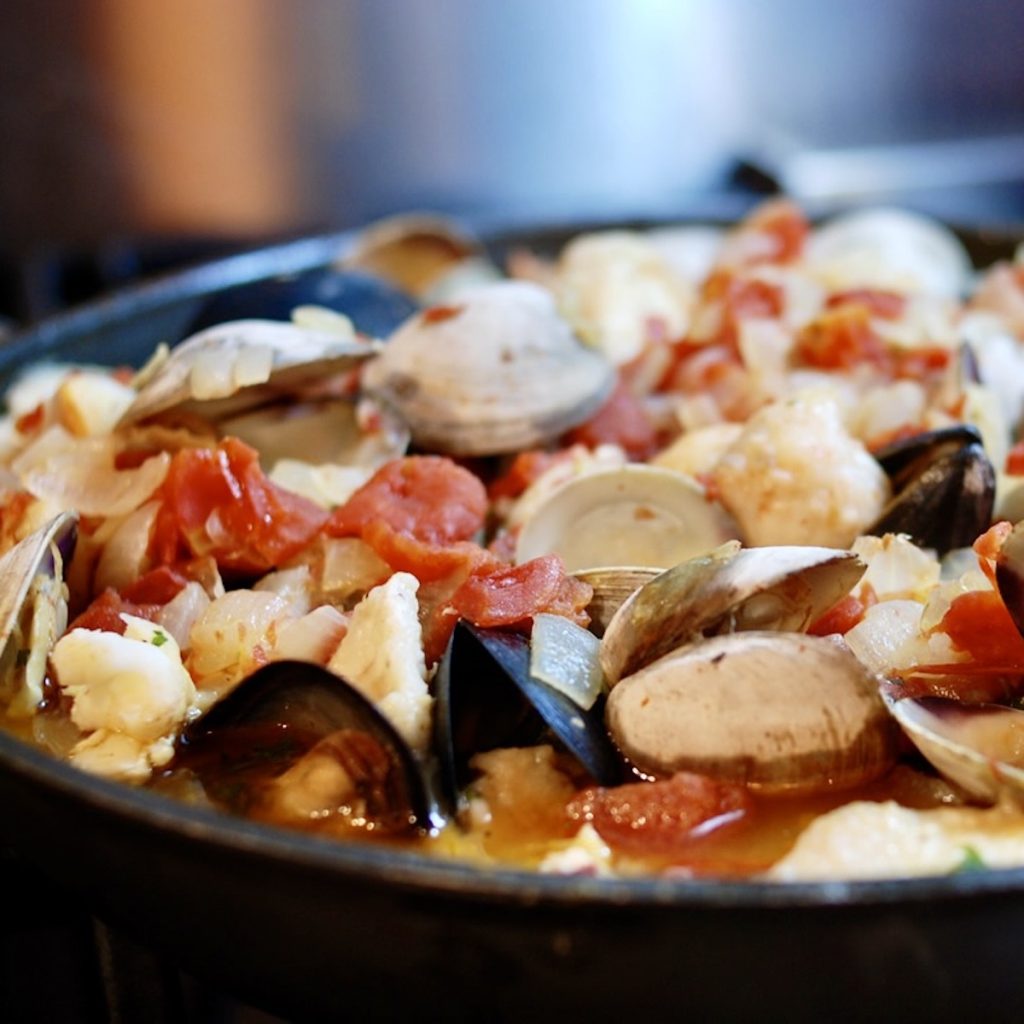
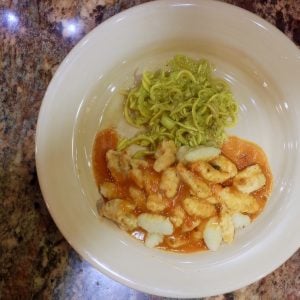
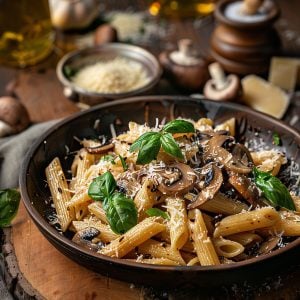


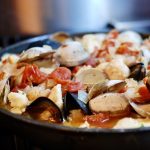
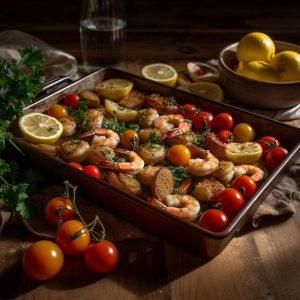

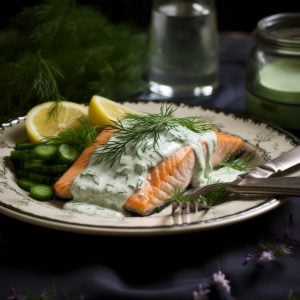
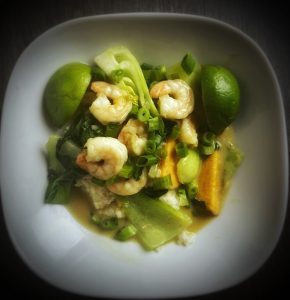
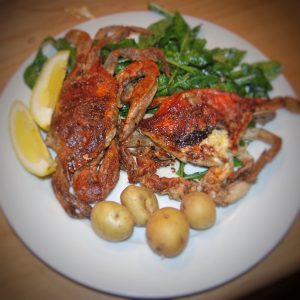
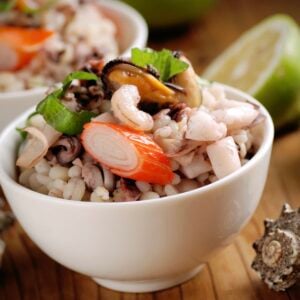
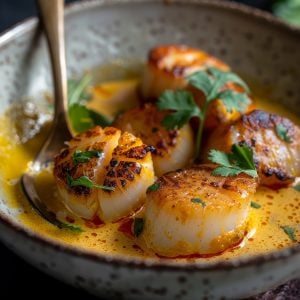
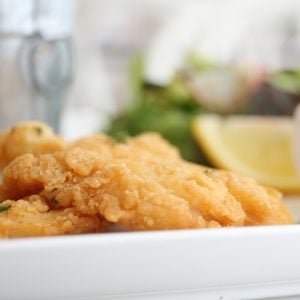


One Response
Wow this looks amazing! I just got back from a trip to New Orleans and have been craving sea food ever since. Thanks for the history and details about Catalonian cooking. I will definitely be trying this next. Thanks!
Hi Abby, you are welcome. – RG